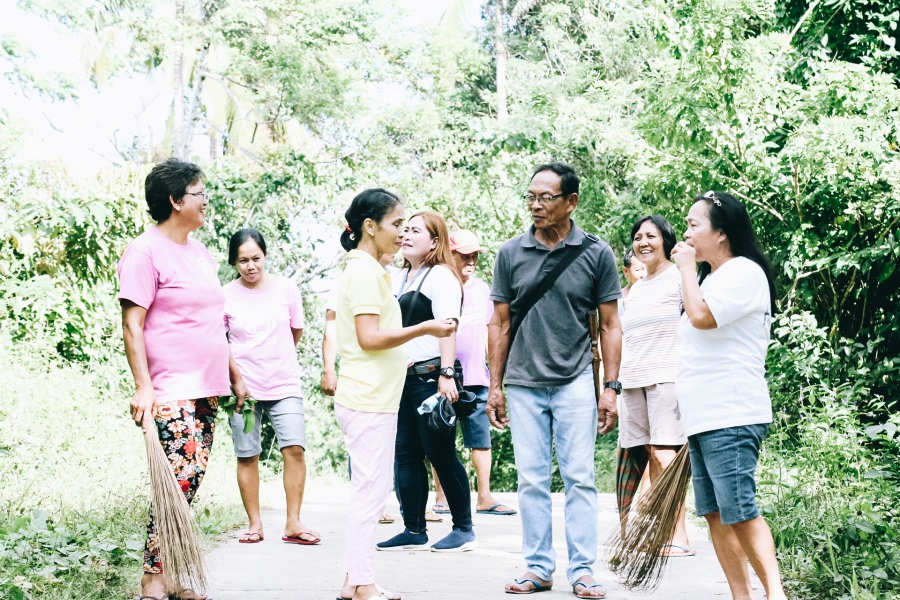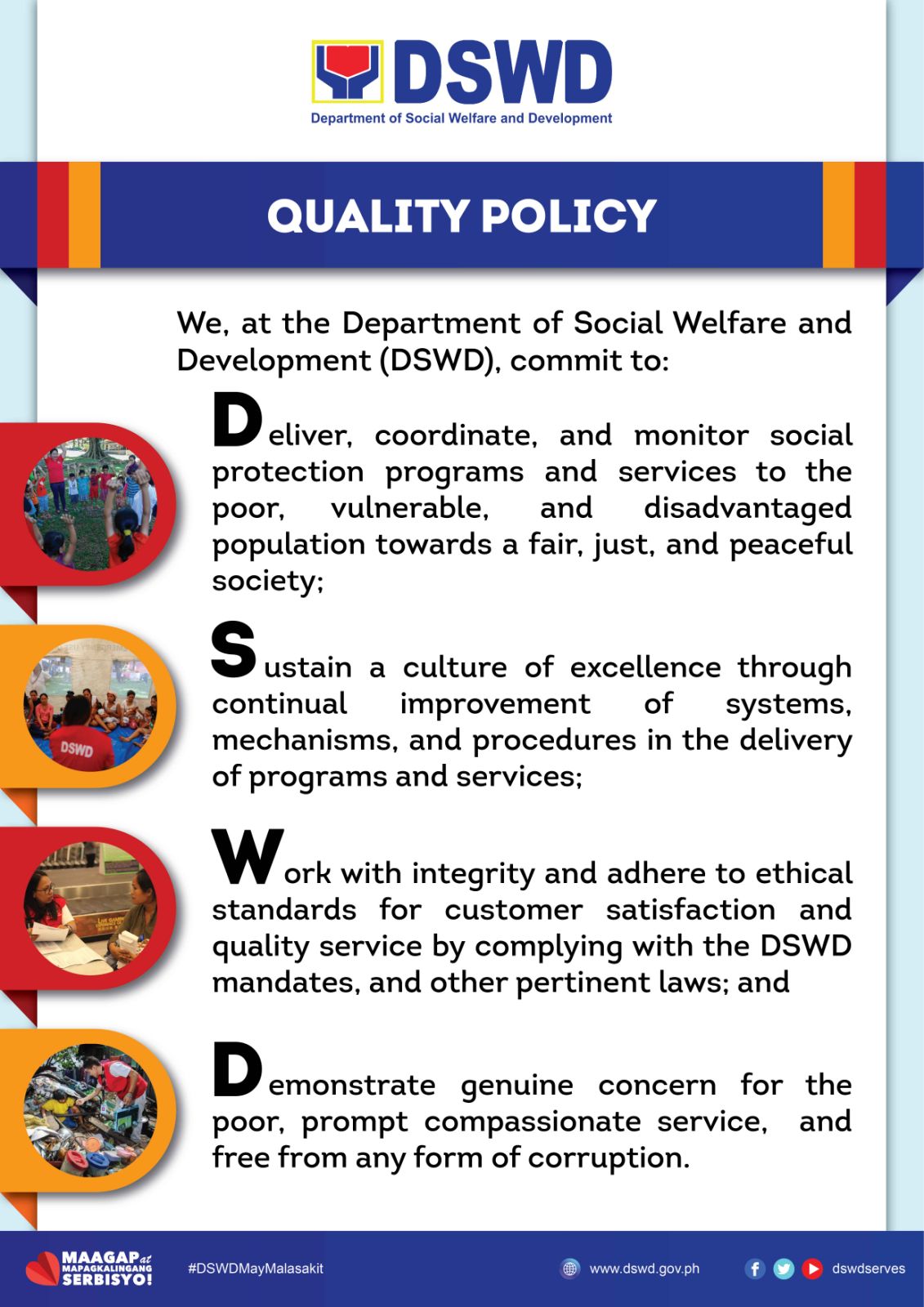These include the 105-day Expanded Maternity Leave Law (RA 11210), Prohibition on Discrimination Against Women (RA 6725), Anti-Violence Against Women and their Children Act of 2004 (RA 9262), Assistance for small-scale women entrepreneurs (RA 7882), Anti-Sexual Harassment Act of 1995 (RA 7877), The Anti-Rape Law of 1997 (RA 8353), Rape Victim Assistance and Protection Act of 1998 (RA 8505), Magna Carta for Women (RA 9710), and National Women’s Day (RA 6949).
Women in Community Development
Given that women have a strong influence in molding the society, the Department of Social Welfare and Development (DSWD) through the Kapit-Bisig Laban sa Kahirapan Comprehensive and Integrated Delivery of Social Services (Kalahi-CIDSS) is continuously promoting women’s engagement in different community activities of the program.
Women take part in deciding, planning, and implementing community projects under Kalahi-CIDSS. Since the program highly advocates bayanihan or collective action it has piqued the interest not only of men, but also women who want to take part in helping their communities grow. There are already 82,810 Kalahi-CIDSS community volunteers in the Bicol Region wherein 52,293 of which are women.
Among these women community volunteers is Carmela Arrojo, 37, a mother of two (2) children, at Barangay Haluban, Lupi, Camarines Sur.
Carmela was selected as Barangay Sub-Project Management Chairperson (BSPMC) of their community to lead and oversee the implementation of their barangay road project funded by DSWD Kalahi-CIDSS in 2016.
At first, Carmela was not confident in handling the project since she has to balance her life as a mother and as a volunteer.
“Bilang volunteer, nahirapan akong magbalanse sa pagiging isang nanay dahil may dalawang anak akong nag-aaral (It was difficult to be a volunteer especially that I am a mother with two children who are still studying),” she said.
Carmela also shared that she sometimes leaves her children to her mother-in-law because she has to assume her responsibilities as BSPMC.
She recounted one instance where she brought her sick child to a doctor for checkup and proceeded immediately to the DSWD Kalahi-CIDSS training.
“Isinama ko sa training yung anak ko para mabantayan ko siya (I brought my child to the training so I can take care of him),” she said.
Because of her unmeasurable love and devotion to help her community, she tried her best to finish the construction of the barangay road with other community members.
“Dahil sa kagustuhan kong makatulong sa aming barangay kahit sa maliit na paraan, nagpursige ako (Because I want to extend support to our community in a little way, I persevered to accomplish my tasks),” she emphasized.
Even though she was not able to take care of her children religiously, with her faith and with guidance from God, she was able to achieve her tasks both as a mother and as a community volunteer.
Maintaining the Project
According to Rosa Bue, 56, barangay councilor, the community has suffered to a great extent due to the poor accessibility from the barangay to downtown Lupi.
She shared that jeepney is the only mode of transportation in their community because of the difficult terrain.
“Umaga lang ang biyahe ng jeep saamin papunta sa sentro kaya hindi na kami nakakabili sa palengke ng isda o karne dahil sa nasisira ito dulot ng kakulangan ng biyahe (Every day, there is only one [1] jeepney trip in the morning when going to downtown Lupi so we cannot buy fish or meat because it will get spoiled),” she recalled.
In 2017, the project was completed and turned over to the barangay. To maintain the barangay road, the women’s organization of Haluban conduct monthly cleanups.
“Binigay itong proyekto sa amin, dapat pangalagaan naming ito ng maayos na nakakatulong sa aming barangay lalo na sa transportasyon (The project immensely helps our community especially in accessibility so we have to take good care of it),” Carmela said.
She also mentioned that the project benefited other barangays such as Cristo Rey and La Purisima.
Carmela is one of the thousands of community volunteers who preserved the value of bayanihan and continues to show a good example to her children and other communities.
Regardless of gender, anyone can help a community in achieving development and creating a difference.
“Nagkaroon kaming mga kababaihan ng pagkakataon na maipakita namin ang aming kakayahan na makatulong sa komunidad (We, the women, were given a chance to show our ability to help the community),” she concluded.
About DSWD Kalahi-CIDSS
Camarines Sur implemented DSWD Kalahi-CIDSS in 35 municipalities with a total implementation grant of PHP1,830,134,624.31 and local counterpart contribution of PHP70,335,841.34 from barangay and municipal local government units (LGUs) to fund community-managed sub-projects.
DSWD had allocated Lupi with PHP37,994,078.54 and local counterpart contribution of PHP7,756,539.23.
The construction of barangay road had a total project cost of PHP1,941,981.00 with 256 household beneficiaries.





